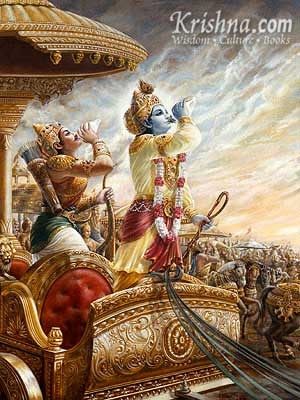 The following is a report of the talk by Swami Dayananda Saraswathi at the Narada Gana Sabha last year on one of the most fashionable myth. Though, it has been quite some time since this event happened, it is worth knowing the Sanyasis' thoughts...
The following is a report of the talk by Swami Dayananda Saraswathi at the Narada Gana Sabha last year on one of the most fashionable myth. Though, it has been quite some time since this event happened, it is worth knowing the Sanyasis' thoughts...Swami Dayananda Saraswathi’s luminous eloquence on a subject of imperative importance: Do all religions have the same goal?
’Only Hindus believe all religions have the same goal. All religions must have a goal and there is no doubt about it. But, they need not be the same or they cannot be the same. Religions are for human beings and not for Gods’; said Swami Dayananda Saraswathi.
While categorizing the religious goals as ‘Dharma’ and ‘Moksha’, Swamiji said that all religions are connected to Dharma and asked, ‘is Dharma universal? Is it religion specific? Does each religion have its own views on Dharma?’
Delving deep on Dharma, Swamiji took the concept of ‘Ahmisa’ and clarified that Ahimsa is not universal.
He connected the concept of Ahimsa to the ‘survival instinct’ of all living beings. ‘There is no exception to the survival instinct and no living being wants to get hurt and no one has the right to hurt others! Ahimsa is not subject to double standards! One can have ones own belief and promote one’s religion by respecting others irrespective of their beliefs.
The ‘freedom’ must not be abused! Though we believe in ‘Ahimsa Paramo Dharma’, other theologies believe in hurting others by various means to achieve their goal. There, the ends do not justify means. For them only end is sacred and not the means and hence they indulge in deception, seduction and coercion,’ averred the Swamiji.
He said that the Abrahamic religions do not accept even one common value whether it is Ahimsa or Mutual Respect or what ever.
Elaborating more on Dharma, Swamiji said, ‘Dharma has a matrix of values to make our choice and we can choose either to do, or not to do, or to differently do! Dharma is not a mandate of God, but a manifestation of God and its basis is knowledge, which doesn’t require to be taught.
This aspect brings the ‘universality of Dharma”. Swamiji added, ‘though law is subject to interpretation, in terms of Dharma all indigenous religions held more or less the same view until they are destroyed’.
Dayananda Saraswathi clearly distinguished between the ‘Moksha’ concept of Sanatana Dharma and the so-called ‘salvation’ propagated by other religions. He said, ‘other religions publicize ‘going to heaven’ as salvation. For them salvation is the need of a condemned or a damned person. They wax eloquent on ‘sin’, ‘sinners’ and ‘saviour’ and they save only sinners!
In the process, they address people of other faiths as ‘sinners’ and say that their God alone can save those sinners. We are not sinners; we are not born out of sin, not in this country; if others say that we are born out of original sin, then they are insulting our parents; we Hindus have highest respect for our parents and we will never subscribe to the view that they are sinners; this is ridiculous! Our prayer must be ‘Oh god, save me from these saviours! They also claim that their God alone can pardon us, save us from our sins for our salvation. They even claim that their God died for us! If somebody died for me, I am not responsible! I have the freedom to take care of myself and I am aware of it’.
Analysing the concept of going to heaven Swamiji said, ‘the other religions talk about heaven as a place, where one can stay permanently and happily without any problem, which are all ‘non-verifiable’ beliefs. Life after death and going to heaven are all non-verifiable.
When you say you are going to a place, then it must be bound by space and time. They say ‘heaven’ is the place of their God, but they also say that their God is ‘formless’. Does ‘formlessness’ require a location? A belief is subject to correction and verification! We believe in different forms of God and that He understands our prayers, which we conduct in different languages.
When a human can respond to different calls and catcalls, God can understand any number of languages. We also believe reaching heaven is a result of ‘Punya’, which in turn is the result of Prayer. Prayer is ‘Karma’ containing specific valid and sophisticated rituals. ‘Karma’ comes from the ‘Kartha’ and as Karthas, we earn Punya by the Karmas of Charity, Dharma, Bakthi, pooja, meditation and penance etc.
When our Punya gets exhausted, we come down to the earth, which means the permanent stay in heaven is denied. When all religions hold non-verifiable beliefs and if all religions accept others religious practices and their beliefs, how can there be a ‘dispute’? Only ‘harmony’ must be there!’
Swamiji concluded by saying, ‘this Jagath (world) is the manifestation of ‘Eshwara’ and ‘Dharma’ is Eshwara and it is non-negotiable. For us, the ‘means’ is much more important than the ‘goal’. We will follow Dharma in our means and God will take care of our end’
For full article refer source:
http://newstodaynet.com/newsindex.php?section=26&id=9383












